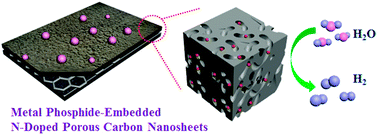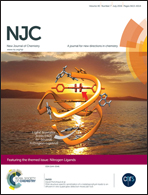Template-directed approach to two-dimensional molybdenum phosphide–carbon nanocomposites with high catalytic activities in the hydrogen evolution reaction†
Abstract
We first developed a new two-dimensional graphene-based Schiff-base porous polymer by the condensation of melamin, 1,4-phthalaldehyde and aminated graphene oxide. Then, we prepared a new family of two-dimensional molybdenum phosphide-containing porous carbons (TPC–MoPs) by using the as-prepared two-dimensional porous polymer (TPP) as a two-dimensional template, and low-cost diammonium phosphate and ammonium molybdate as precursors through stepwise self-assembly and pyrolysis. The resulting TPC–MoPs featured layered and porous structures with high specific surface areas of up to 72 m2 g−1. The unique mophology characteristics render such kinds of materials with increased active catalytic sites and better conductivity, as compared with the other MoPs-based composites. As a consequence, the as-prepared composites exhibit superior electrocatalytic performance in the hydrogen evolution reaction (HER) under acidic conditions, with a Tafel slope of 68.5 mV dec−1, a low onset overpotential of 65 mV (versus the reversible hydrogen electrode), and a large exchange current density (j0) of 0.144 mA cm−2.


 Please wait while we load your content...
Please wait while we load your content...